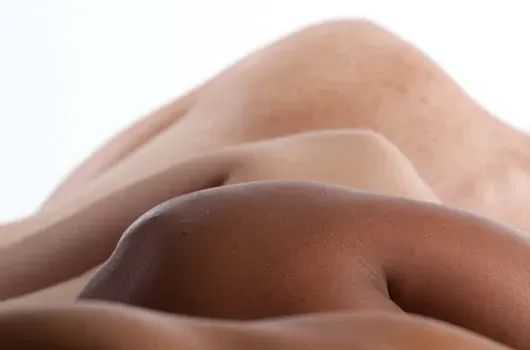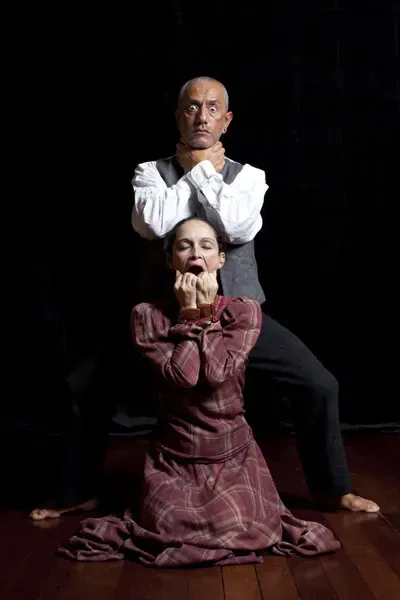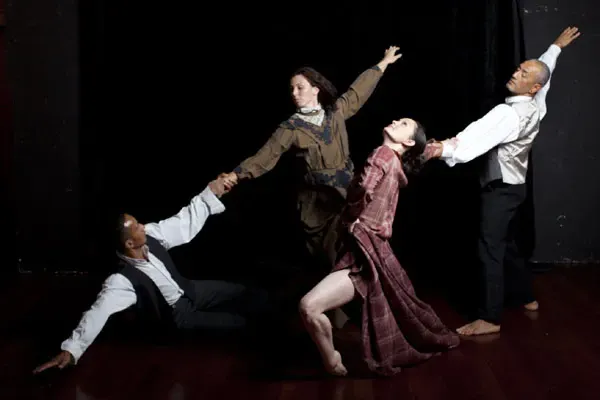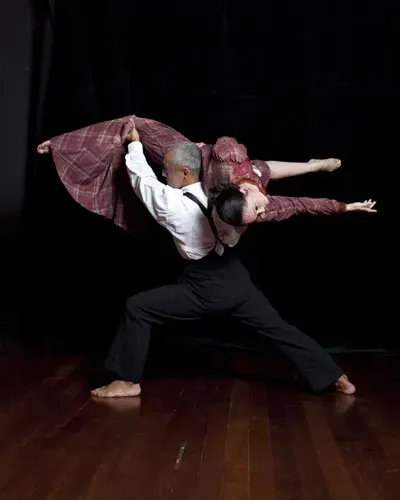Review: Te Houhi
Written by
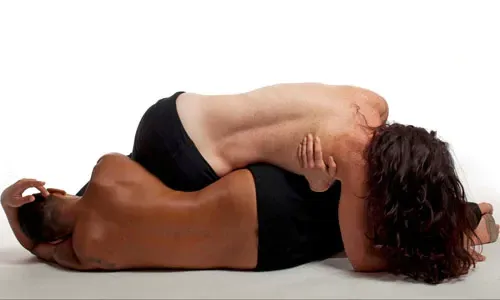
Reviewed by Richard Howard
Te Houhi - The People and the Land are One performed by Atamira Dance Company vividly recalls a tragic historic episode of land acquisition fraud of a massive scale at Waiohou. It is a story of individual and official betrayal, of greed, Maori and European complicity, ignorance, murder and mass enforced eviction.
This impressive dance theatre production, a living contemporary memorial to those people of Tuhoe Hapuu and the village of Te Houhi who fought for their ancestral lands in the late 19th century and perhaps also to those who fight for return of their lands and their livelihoods even today.
Te Houhi, choreographed by Maakaa Pepene is a shadowy, misty almost meditative piece, carefully and crisply delivered by seven high calibre and experienced dancers -Taiaroa Royal, Taane Mete, Jason Moore, Justine Hohaia, Kelly Nash, Jack Gray - in impressive ensemble mode, supported by a skilled production and technical team.
The stage is dark, there is a mere suggestion of a Whare Tipuna in the shadows and a vast screen of shifting images suspended above reflecting in the shiny black floor. The mood is almost sacred as endless clouds roll into the space, forming and parting. Mists evocative of the Urewera Ranges flow out into the audience around a single seated figure, the beholder, the heart of the people, the witness to the truth, the embodiment of the universal continuum, the prophet played by Maakaa Pepene himself.
Each element of the story and the extent of the tragedy quietly, shockingly, unfolds from the lengthy opening Karakia , through the nascent like emergence of the earth and people as one being, to the events that lead to violence, eviction, the total abandonment of the people and the lengthy, ultimately unsuccessful process of restorative justice.
In the 19 Century a man called Harry Burt, a European fluent in Maori, an interpreter of language, familiar with native land issues and laws advisor, adopted as a trusted member of the Ngati Tuhoe hapuu Ngati Haka Patuheuheu of Te Urewera used his favourable position to persuade a small number of owners in the Hapuu to sell their land.
At the time the law allowed sale of jointly owned Maori land to non-Maori through the Maori Natives Land Court according to the majority decision of the numerous small land owning interests within the tribe. Burt had nothing like the majority of owners on his side that were willing to sell their land, nor were any but two vendors represented when he fronted up to the Native Lands court hearing in 1886.
Nevertheless, having bribed a handful of Iwi of the related Ngati Manawa who were also present at the court to blatantly lie to the Judge, Burt walked out that day owning 7000 acres of Tuhoe’s best ancestral land. This block included their village, their school, their burial place and their Tipuna Whare; half their ancestral holdings and the very basis of their livelihoods.
Burt’s actions were officially acknowledged even back then as a cold calculated betrayal, a fraudulent transaction under the law, nevertheless he, his wife, their investor and the complicit members of Ngati Manawa all got away with it.
The land was sold again immediately that very same day to Burt’s investor who in turn sold it back to Burt’s wife so that the land would automatically be legally positioned outside the jurisdiction of the land court from that day forward.
We clearly experience in the dance the events and the overwhelming anguish of the people as they face the injustice and struggle with Burt, the Land Courts and the Government of the day.
The choreography had a very carefully plotted, almost Greek Chorus like quality to it, often soft in tone, tidy, controlled and rounded in movement and angle. Although superbly performed and pleasant to watch to my mind it is a little safe in its nature. The approach apparently shied away from fully portraying the devastating, bloody, hard, chaotic, sharp edge, angular reality that I imagined must have been present in the events of the time.
This is not a showy piece of impressive leaps and bounds and bewildering manipulations of the human body, it is largely simple in form, emotive and demonstrative both danced and acted, expressing mood and holding a sense of mana and integrity. Indeed the responsibility for portraying such a painful and deeply unresolved issue would require a very thoughtful and sensitive approach – which was evident in this production.
Of the sequences several are memorable, the portrayal of the passive protests and the brutality and murder of the protestors by the colonial police which conveyed the sense of place and the tenacity of the people determined to stay on their land. There was a superbly performed ensemble rhythmic sequence with stamping feet and slapping hands advancing and receding across the stage.
The musical sound-scape composed and produced by Paddy Free and Stephen Hussey was impressive and in a highly contemporary mode interwove and accented the emotional and cultural qualities of the story.
The dance was well supported by the lighting design (by Vanda Karolczak) and operation and by skilled use of potent imagery (by Louise Potiki Bryant) which successfully conveyed the higher, broader context of the dance and the story and which added large splashes of colour and a dynamic quality to the masterful setting by John Verryt.
Burt went on to sell the land. In 1907 one of the successive owners, a man called James Grant, instigated the mass destruction of homes, crops, the local school, the murder of many and the eventual Police and Army supported eviction of the remaining people of Waiohou.
The long tentacles of loss, poverty, injustice, displacement and the yearning for remedy still wind around the hearts and minds of the Tuhoe people, more than a 100 years after their 17 year struggle to re-secure their ancestral lands.
This show is a timely reminder to continue to tread softly but decisively and with wisdom in the present time, to bring understanding and justice to the relationship between Maori and non-Maori and to hold in our minds that the land and the people are always vitally interconnected.
Te Houhi - The People and the Land are One was performed as part of the TEMPO Festival
Atamira Dance Company
Reviewed by Richard Howard
Q Theatre Auckland
20 September 2011
